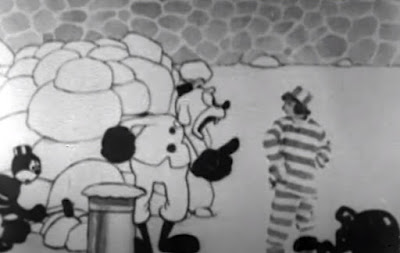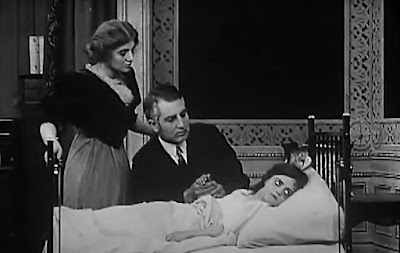Starring: Mack Sennett, Mabel Normand, Edward Dillon, Jack Pickford, Kate Toncray, and J. Jiquel Lanoe
A wealthy hypochondriac (Sennett) is instructed by his doctor (Lanoe) to go up onto the mountains to benefit from the pure air. The man's wife (Toncray) and teenaged children (Normand and Pickford) come along for the trip. Snowball fights, illicit lovemaking between the daughter and her boyfriend (Dillon) ensue, with it all culminating with members of the family in mortal danger.
That's a long summary for a short movie, but I couldn't figure out a shorter way to put it. Which is odd, because that paragraph also describes almost everything that happens in the film.
fdsa
Director: Mack Sennett
Rating: Five of Ten Stars
A wealthy hypochondriac (Sennett) is instructed by his doctor (Lanoe) to go up onto the mountains to benefit from the pure air. The man's wife (Toncray) and teenaged children (Normand and Pickford) come along for the trip. Snowball fights, illicit lovemaking between the daughter and her boyfriend (Dillon) ensue, with it all culminating with members of the family in mortal danger.
That's a long summary for a short movie, but I couldn't figure out a shorter way to put it. Which is odd, because that paragraph also describes almost everything that happens in the film.
"What the Doctor Ordered" is a fast-moving film where not a second is wasted. In fact, it moves so fast that I wish a little more time had been spent on a few more transition scenes or character interactions to fill in the relationships a bit more. It would have made the film feel less choppy and the story more substantial.
That said, the film is full of raw energy and the actors all give excellent performances. Mabel Normand and Edward Dillon are particularly fun to watch, while Normand's scenes with Jack Pickford have a playfulness in them that will put a smile on your face. Frequent watchers of silent movies may be particularly fascinated to see Mack Sennett in a starring role, since he's usually behind the camera or in very minor parts.
fdsa


































.jpg)






.jpg)
